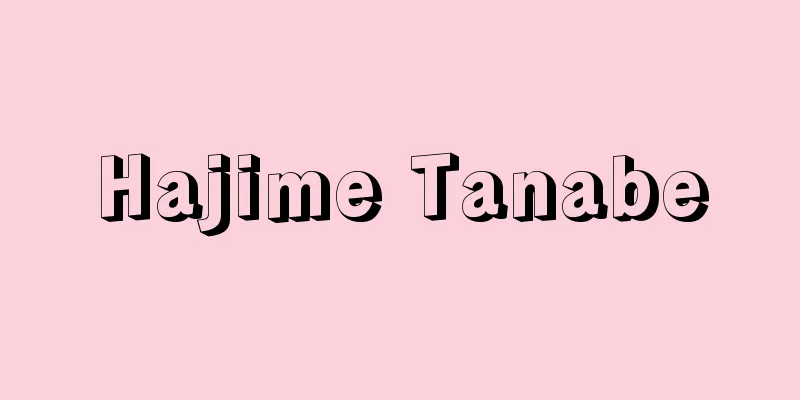Pecan - Pecan (English spelling)

|
A deciduous tall tree of the genus Caria in the Juglandaceae family (APG classification: Juglandaceae). Native to northern Mexico and the central-southern United States. It can reach a height of 60 meters, but in cultivation it is pruned to about 15 meters. The leaves are pinnately compound, with an odd number of leaflets (11 to 17), and the young leaves are hairy. The buds are hairy and yellow. Monoecious. The male flowers form string-like inflorescences near the tips of the previous year's branches, and the female flowers near the tips of the previous year's branches in the middle of their development. They flower around May, and the male flowers are prototypic, so cross-fertilization generally occurs. For this reason, it is recommended to plant this variety together with other varieties that have a flowering period that is favorable for pollination. The pods are oblong and about 4 cm long. The kernels are relatively soft, about 4 cm long, with a pointed tip, and a smooth brown surface. Inside are thick, white cotyledons wrapped in a thin seed coat, which are edible. Cultivation began in the 1840s, and many of the main varieties were selected from wild species, with grafting propagation beginning in 1846 using the Centennial variety. Propagation is by grafting onto a common rootstock or a closely related species of the same genus. Plants should be spaced at least 12 meters apart. Fruiting begins 6 to 10 years after planting. Pecans contain 70.7% fat, 2.1% protein, 8.5% carbohydrates, and 728 calories per 100 grams. They are eaten raw as nuts or used in confectioneries and as an ingredient in edible oil. Pecan's close relatives include Carya cathayensis Sargnt, native to China, shagbark hickory/ C. ovata (Mill.) K. Koch, native to North America, and big shellbark hickory/ C. laciniosa (Michx. f.) Loud., as well as a dozen other species. Along with pecan, these are commonly called hickory, and their high-quality, flexible wood is widely used for furniture, skis, and other products. [Muneo Iizuka February 17, 2020] [References] | |©Shogakukan "> Pecan Source: Shogakukan Encyclopedia Nipponica About Encyclopedia Nipponica Information | Legend |
|
クルミ科(APG分類:クルミ科)カリア属の落葉高木。メキシコ北部からアメリカ合衆国中央南部原産。樹高60メートルに達するが、栽培下では15メートル程度に整枝する。葉は羽状複葉で、小葉は11~17枚の奇数からなり、若葉には毛が多い。芽は毛深く、黄色。雌雄同株。雄花は紐(ひも)状の花穂をつくり、前年枝の先端近くにつき、雌花は前年枝の発育中位の枝の先端近くにつく。5月ころに開花し、雄花先熟で、一般には他家受精が行われる。このため、栽培にあたっては受粉に好都合な開花期を示す他品種を混植するとよい。殻果は長楕円(ちょうだえん)形で、長さ約4センチメートル。核は比較的柔らかく、長さ約4センチメートルで先端がとがり、表面は褐色で滑らかである。内には、薄い種皮に包まれ肥厚した白色の子葉があり、食用とされる。栽培は1840年代に始まり、主要品種は野生種から選抜されたものが多く、センテニアル種によって接木(つぎき)繁殖が始まったのが1846年である。繁殖は共台(ともだい)または同属近縁種を台木とした接木による。植え付けは樹間12メートル以上とする。植え付け後6~10年で結実をみる。 ペカンは脂肪70.7%、タンパク質2.1%、炭水化物8.5%で、100グラム当り728カロリーを示し、ナッツとして生食されるか、菓子や食用油の原料とする。 ペカンの近縁種には中国原産のカリア・カルサエンシスC. cathayensis Sargnt、北アメリカ原産のシャグバークshagbark hickory/C. ovata (Mill.) K.Koch、シェルバークbig shellbark hickory/C. laciniosa (Michx. f.) Loud.などのほか十数種が知られ、ペカンとともに一般にヒッコリーとよばれ、柔軟性のある良質の材は家具、スキーその他に広く利用される。 [飯塚宗夫 2020年2月17日] [参照項目] | |©Shogakukan"> ペカン 出典 小学館 日本大百科全書(ニッポニカ)日本大百科全書(ニッポニカ)について 情報 | 凡例 |
<<: Beganna (English spelling) [Amhara]
>>: Beguin - Began (English spelling) Albert Béguin
Recommend
Oligonucleotides
…They fold to form unique three-dimensional struc...
Kushiro Marsh
The Kushiro Plain is a low-lying, marshy peatland...
Akebonoshouma - Akebonoshouma
...An ornamental garden plant, mainly produced by...
Barnack, O.
In 1912, Eastman Kodak Company (abbreviated as Ko...
"Enshu Relics Book" - Enshu Relics Book
...This is the common name for the register that ...
Echimydae
...Also known as the American spiny mouse. A gene...
Shozo Tanaka
A politician and social activist of the Meiji per...
Ring
〘Noun〙 ("Kin" is the Tang and Song pronu...
Ichijo Domestic Affairs - Ichijo Tadamasa
1557-1580 A nobleman from the Azuchi-Momoyama per...
Turning the pot over - Hachigaeshi
This is the title of a classical Shakuhachi piece....
Eboshiori - Eboshiori
Noh piece. Fourth piece. Current piece of Kanze, ...
"Road" comedies
A series of American nonsense comedies starring th...
al-Nuwira, al-Hādī (English spelling) alNuwiraalHadi
...Official name = Republic of Tunisia al-Jumhūrī...
Autonomic function
Autonomic functions are also called vegetative fun...
Vladislav [II] - Vladislav
…The Jagiellonian dynasty's advance into Cent...









![Kazuno [city] - Kazuno](/upload/images/67cb3854d44a8.webp)